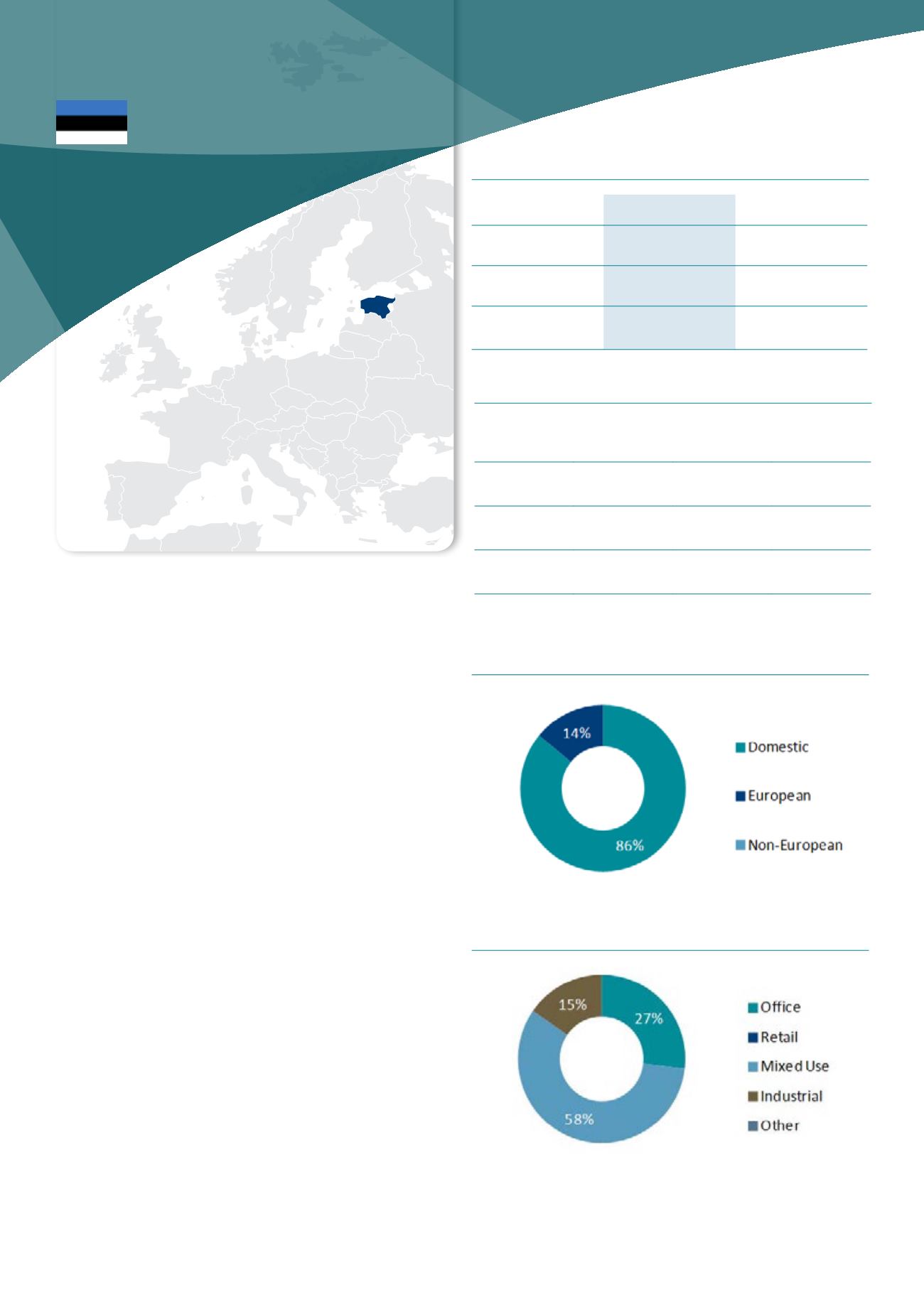
22 |
Investor Guide to Europe 2014
Estonia, along with the other Baltic States, is one of
the smallest investment markets in Europe by size,
and thus sees relatively low levels of investment.
But like other emerging markets, we are seeing
relatively strong levels of growth, with the value of
investment grade stock doubling since 2005.
The focus of investment is centred on the capital, Tallinn,
particularly for core office and industrial assets. The retail
landscape is more diversified across the country, covering a
number of secondary cities, which have proved resilient to the
economic downturn.
Investors are attracted to the strong cash flows and relatively
high yields on offer and expectation of further compression.
Asset transfer deals and share transfer deals are both
common practice.
Activity in the market is limited to private companies, funds
and institutions. Much of the activity is driven by domestic
investors, with some growing interest from Russia. Although
there has been activity from nordic investors, but their share
is falling.
Debt funding is relatively easy to obtain for assets offering
strong income. Interest rates are favourable, but selectivity is
key. Currency risk was eliminated back in 2011, when Estonia
joined the Eurozone.
Market sizing
Estonia
Europe
Invested stock*
(Total stock)
EUR 5bn
(EUR 10bn)
EUR 3,380bn
(EUR 8,150bn)
liquidity ratio*
(10y average)
1.0%
n/a
4.0%
(4.5%)
2013 volumes
(10y average)
EUR 0.1bn
n/a
EUR 139bn
(EUR 135bn)
Investment activity by asset type, 2013
Source : DTZ Research
Investment activity by source of capital, 2013
Source : DTZ Research
Market pricing – Tallinn (Q4 2013)
office
Retail
Industrial
Current Yield
7.75% 7.50% 9.00%
Min/Max
(10y)
6.00-10.00% 6.00-10.00% 7.00-16.00%
Yield
definition
net initial yield
Source : DTZ Research
ESTonIa
* 2012 figures


